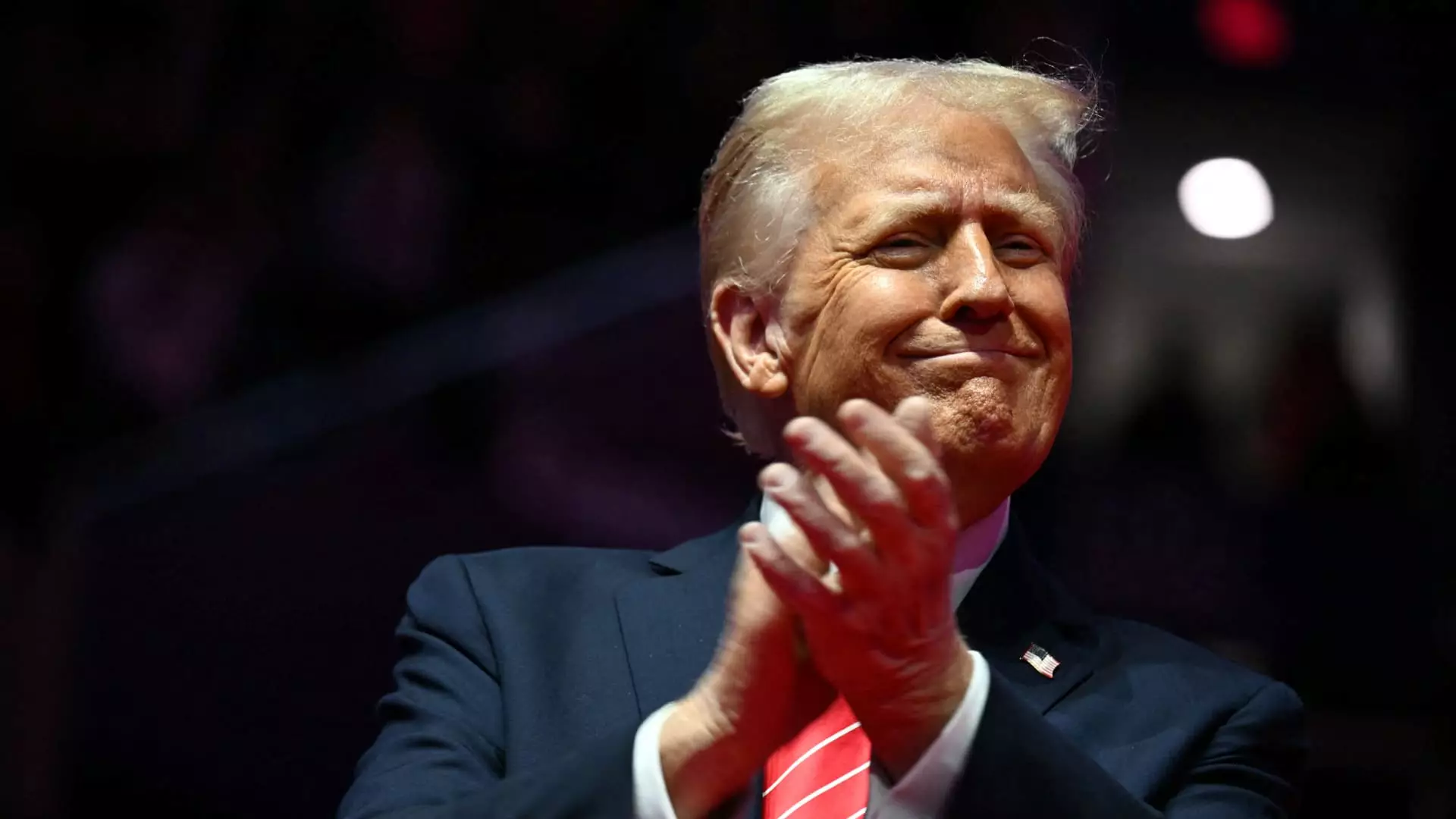On the eve of Donald Trump’s second presidential inauguration, anticipation swirls around his plans to leverage executive orders as a primary tool to enact his agenda swiftly. Reports indicate he aims to sign over 50, with the potential to surpass 100, immediately following the ceremonial oath-taking. This intense approach suggests that Trump intends to convey urgency and decisiveness right from the start of his new term. The venue for his signing ceremony has shifted to the Capital One Arena due to the unpredictable weather typically experienced in Washington, D.C. Such a recalibration hints at both the physical and symbolic strategies Trump employs—convening large crowds to instill momentum and connect directly with his base.
The executive orders expected to be unveiled encompass a mix of Trump’s longstanding campaign pledges along with decisive actions that would reverse key policies enacted by his predecessor, Joe Biden. A focal point for many of his supporters is likely to be an order declaring a national emergency concerning the U.S.-Mexico border. This initiative signifies Trump’s continuing emphasis on stringent immigration policies, which have been central to his political narrative. Trump’s rhetoric suggests he sees this action as both a political necessity and a moral imperative, vowing to address what he terms an “invasion” at the borders.
At a rally preceding his signing ceremony, Trump proclaimed, “By the time the sun sets tomorrow evening, the invasion of our borders will have come to a halt…”. This aligns with Trump’s historical approach to border security and reflects his commitment to employing executive power to implement policies that have encountered legislative pushback.
In anticipation of this significant policy shift, several legal complications loom. While Trump has previously pushed for funding for border security through executive orders, the attempts have often met federal court challenges. In the past, courts have consistently maintained the checks and balances principle, asserting that Congress holds the ultimate power over funding allocations for federal projects. Trump’s announced intention to cut funding for Biden’s climate initiatives under the Inflation Reduction Act poses additional risks. If he moves forward with this without clarity from Congress, it could ignite a legal battle over the extent of presidential powers, particularly concerning the Impoundment Control Act of 1974, which mandates the executive branch to use allocated funds as intended.
Trump’s claims regarding the constitutionality of the Impoundment Control Act also tap into broader tensions over executive authority. These tensions set a tone for potential conflict between the new administration and Congress, especially with Democrats holding the Senate majority.
Additionally, Trump’s revival of the “Schedule F” policy reflects a strategic maneuver to reshape the federal workforce. By reclassifying thousands of civil service jobs, Trump aims to facilitate the appointment of individuals aligned with his administration’s goals. This strategy indicates a continued commitment to transform federal employment dynamics, potentially sidelining traditional norms regarding public service neutrality. The ramifications of such actions could lead to significant changes in how various federal agencies operate and how policies are implemented.
Moreover, in briefing GOP lawmakers, Trump and his advisors have showcased their resolve to move quickly and decisively, indicating a stark contrast to the often more deliberative processes seen in previous administrations. This glimmer of aggression could signal a wide-reaching shift in federal policy direction, emphasizing loyalty and commitment to Trump’s political vision.
Trump’s objective for a “record-setting number of documents” post-inauguration is emblematic of his aggressive style of governance. It aims to set a prototypical standard for how he envisions his presidency—one defined not merely by words but by actions that reflect his campaign promises and political aspirations. The strategic signature of these executive orders will likely characterize his term as one of bold moves and, potentially, contentious political debates, as he seeks to realign America’s trajectory from what he perceives as a deviation under Biden’s administration.
As Donald Trump embarks on this new chapter of his presidency, his reliance on executive orders may reignite fierce partisan battles and numerous legal stand-offs, but also serve as a rallying cry for his supporters eager for tangible results. His inaugural actions will undoubtedly lay a framework for the upcoming challenges and triumphs his administration will face in the evolving political landscape.


Leave a Reply